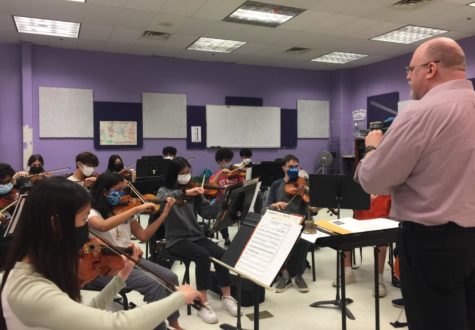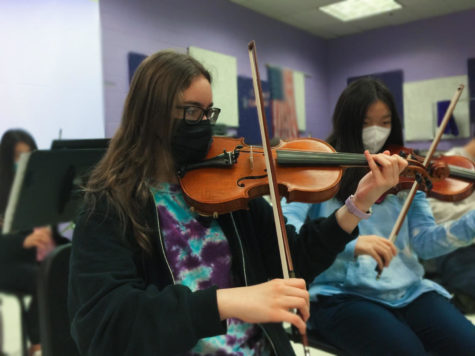Classical curiosity: Listeners explore boundless genre of music
April 20, 2022

The sustained sound of the piano echoes across the room as the pianist dramatically lifts their fingers off of the fingerboard, ending the piece. Classical music holds boundless evocative emotional melodies and compositions, encapsulating the essence of emotion. Whether it be combining dynamics, articulation, tempo or motifs, classical music paints a picture through sound that entices the listener.
The world of classical music presents interesting themes from different eras. According to CMUSE, it has a variety of performance styles starting way back in medieval times, such as Bach fugues during the Baroque Era (1600-1750), Mozart and Beethoven symphonies from the Classical Era (1750-1830), Chopin’s sonatas during the Romantic Era (1798-1837) and still modern day. Although the collection of music holds a plethora of compositions, this genre of music has spanned nearly 400 years, holding much to explore.
“What I really enjoy about Bach’s music is since it’s in the Baroque era, they actually did not have pianos [and instead] played on the harpsichord,” freshman Mathangi Ramakrishnan said. “There were no dynamics and no matter how hard or soft you pressed on the harpsichord, it would create the same tone. The fact that Bach was able to create and include such musicality into his pieces without even having to use dynamics is really impressive to me.”
Classical music has also been unknowingly used in modern-day pop, hip hop and rap songs. According to ClassicFM, numerous pop songs have been sampled and derived from classical music. For example pop band Maroon 5’s song “Memories” has been sampled by a known popular classical piece, Pachelbel’s “Canon in D.”

“A lot of people will sample older [classical music] and build new pieces out of it,” orchestra director and guitar teacher Aaron Mynes said. “If you find a song that you know, and you go ‘Oh, that’s where they got that from,’ then you can start listening to other works of the same style of music by the composer. You might come up with Bach, Handel or Vivaldi’s ‘Four Seasons,’ and you’ll find tons of pieces exploring that way.”
Nowadays, classical music is more accessible on mainstream music apps like Spotify and Youtube. Classical music and comedy duo “TwoSet Violin” has been rising in popularity on Youtube, increasing relatability and inspiring musicians to learn about music.
“[TwoSet] explores different areas of classical music and is just a really funny YouTube channel overall,” Ramakrishnan said. “Even if you don’t play any instruments, you can still watch it and pick up a few facts about different composers and instruments while enjoying [their videos].”
According to Healthline, classical music is shown to stimulate and activate reward centers in your brain, which improves overall motivation, mood, focus and memorization. Alongside these benefits, playing and listening to classical music is an artistic outlet for students to express and add individuality to their pieces.
“In classical music, there’s no lyrics to it like normal music so you interpret how it is,” freshman Anna Galysh said. “Playing the violin, I really enjoy adding my own interpretation to the piece and getting inspired by what the composers wrote.”
The younger generation continues to have a growing admiration for classical music, as it persists in connecting to people that appreciate the genre globally.
“I don’t know anybody that can’t hear Beethoven’s ninth symphony when they break out into ‘Ode to Joy,’” Mynes said. “The pieces we have 200 years later, they’re never going to be forgotten. Classical music is an artistic outlet that fills something in the human soul; without it the world wouldn’t be the same.”


